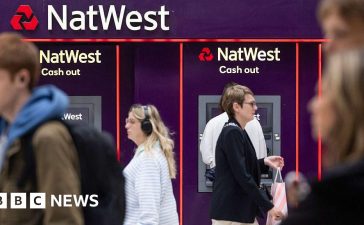Introduction
- The term “Initial Coin Offering” or ICO refers to a digital way of raising funds, facilitated using distributed ledger technology (DLT). Just as an initial public offering issues shares or other securities to investors in exchange for fiat currency, an ICO issues transferable tokens to investors, often in exchange for cryptocurrency such as Tether or Bitcoin. Traditionally, ICOs have been regulated lightly, but, following scandals such as OneCoin, global regulators have increasingly focussed on digital assets, and ICOs in particular. The UK government recently published its “Future financial services regulatory regime for cryptoassets”, and, in addition to the changes made this year, we can expect further far-reaching changes in the years to come. This article looks at why people use ICOs, the process involved; types of token; and the rapidly transforming way in which ICOs are treated from a UK regulatory perspective. It is intended primarily for those considering making an ICO. For further information, please contact the author.
Why an ICO?
- ICOs can be used to raise capital swiftly, with low transaction and settlement costs. In certain cases, ICOs have yielded returns for investors, as well as capital for the offeror. They can reduce the use of intermediaries, and offer access to a wide range of investors. In some cases, there will be a lack of regulatory hurdles.
- However, ICOs can also be perceived as risky for investors, with the most popular cryptocurrencies being relatively volatile. There are exchange rate risks where investors are converting cryptocurrency into fiat currencies, which can be difficult or expensive to hedge. The FCA and other regulators have issued warnings about the lack of investor protection, the potential for fraud, and issues around the documentation of ICOs. There is also considerable regulatory uncertainty with ICOs in the UK: whether or not an ICO falls within the UK regulatory perimeter will need careful consideration, and those considering an ICO are strongly encouraged to take specialist legal advice.
- ICOs were initially used mainly to offer new cryptocurrencies; increasingly they are being used by start-ups to fund other developments, particularly those running on other DLT platforms, such Ethereum. However, any company wanting to offer tradeable rights to investors in exchange for capital can make an ICO.
The Process
- An ICO can be either private (i.e. limited to a select group of investors, often qualified investors such as high-net worth individuals or financial institutions), or public (open to all). In 2018, for example, Telegram, the Russian messaging app, raised $1.7bn in a private ICO.
- An ICO will start with the offeror identifying its investment objective, defining its target audience, and producing material for investors to learn more about the offering. The company will need to decide on the tokens it will offer, what they represent, and how they will be structured, for example:
- Static price and supply:the offeror will set a specified limit for funding, meaning that each token has a preset price, and the total number of tokens will be fixed.
- Dynamic price but static supply: An ICO can have a dynamic funding goal but a static supply of tokens; therefore the total funding received will set the price per token.
- Static price but dynamic supply: some ICOs will have a fixed price but a moveable token supply, so that the amount of funding will drive the supply.
- The offeror will generally create a “white paper”, which is akin to a prospectus for an IPO. This explains important information related to the ICO, such as the nature of the project, how much capital is required, what the tokens will represent, how many of the virtual tokens will be retained by the founders and how many will be available for offer, what type of payment will be accepted (currencies / cryptocurrencies etc), and how long the ICO will run. Unlike an IPO prospectus, there are no content or minimum standards for white papers. Token issuers will often seek to disclaim liability in the T&Cs in the white paper, unlike in a prospectus, where directors must assume responsibility for the statements made in the document. Each subscriber will subscribe for tokens by transferring consideration, and will be deemed to have accepted the terms and conditions applicable to the ICO.
Types of Token
- The offeror has absolute discretion as to the rights attributable to a token. Often tokens fall broadly into one of two categories:
- Utility tokens: these confer on the holder the right to “buy” a service or a product, sometimes on preferential terms, such as a discounted rate or exclusive access. The right to buy is generally limited to a closed group. Think of a fairground, where you buy tickets, and these tickets can be swapped for rides, food, drink, toys etc, but they have no value outside the fairground. An example is the Basic Attention Token, where users earn tokens in exchange for watching advertisements; they can then use BAT tokens on content or services provided by the platform. At the time of the ICO, the specific service, product or platform may not exist, if the funds are intended to be utilised to develop it.
- Security tokens: these have rights akin to those of a traditional security, such a share or a debt security. This might include the right to participate in profits, or voting rights, or rights in a particular asset. A “pure” security token will not have any additional or supplemental use.
The UK Regulatory Position
- The regime in the UK which regulates ICOs is changing rapidly, particularly in respect of financial promotions and money laundering. Traditionally, ICOs have been viewed as lightly regulated or even unregulated. The UK regulator, the FCA, has adopted what is sometimes called a “technology neutral” position to ICOs; in other words, it applies existing regulation to new technologies or innovations such as ICOs. However, changes made in 2023 have seen the regulatory perimeter extended specifically to cover digital assets in certain key areas relevant to ICOs. Issuers must take account all the regulatory requirements which may be relevant[1]. This includes, in particular, rules regarding the carrying out of regulated activities, the making of financial promotions, and the publication of a prospectus. These are considered in turn below.Regulated Activities
- In certain circumstances, an offeror in an ICO may be carrying out regulated activities, such as dealing in investments, arranging deals in investments, or advising. What can constitute a specified activity, and what can constitute an investment, is highly fact-specific. However, at least in certain circumstances, offering a token could risk falling under the definition of a collective investment scheme (CIS) or an alternative investment fund (AIF).
- A CIS is defined in s.235 FSMA as “any arrangements with respect to property of any description, including money, the purpose or effect of which is to enable persons taking part in the arrangements (whether by becoming owners of the property or any part of it or otherwise) to participate in or receive profits or income arising from the acquisition, holding, management or disposal of the property or sums paid out of such profits or income”.
- An “AIF” is defined in The Alternative Investment Fund Managers Regulations 2013 as “a collective investment undertaking, including investment compartments of such an undertaking, which (a) raises capital from a number of investors, with a view to investing it in accordance with a defined investment policy for the benefit of these investors; and (b) is not a UK UCITS.
- The activities of (a) establishing, operating or winding up a CIS, and (b) managing an AIF, are regulated activities.
- There is a risk that tokens issued under an ICO could constitute electronic money. This is defined under UK law as being electronically (including magnetically) stored monetary value as represented by a claim on the issuer which is both: (a) issued on receipt of funds for the purpose of making payment transactions, and (b) accepted by a natural or legal person other than the token issuer. The issuance of electronic money is a regulated activity under FSMA. Utility tokens can constitute electronic money in some circumstances, although this is less likely if the token is issued in return for a cryptocurrency payment.
- Security tokens may also constitute specified investments, where they confer rights to traditional investments such as shares or instruments creating indebtedness.Marketing an ICO
- An issuer of an ICO must take into account the UK requirements in respect of financial promotions. The general restriction on financial promotion is contained in section 21 of FSMA, which provides that a person must not, in the course of business, communicate an invitation or inducement to engage in investment activity unless the promotion has been made or approved by an authorised person or it is directed at a person who falls into one of the exempt categories of recipient and meets a series of tests.
- Until recently, this restriction was likely to capture investment activity relating to dealing in shares, securities and contract-based investments, but was less likely to capture utility tokens. However, the financial promotion regime has now been expanded to cover many cryptoasset promotions. The requirements will apply to all firms that wish to market qualifying cryptoassets to UK consumers. This applies whether or not the firm is based overseas or regardless of the underlying technology used to make the promotion. By expanding the perimeter of the financial promotion regime, the government intends to ensure that cryptoassets promotions will be held to the same high standards for clarity, accuracy and that apply to the traditional financial services industry.
- A cryptoasset will be a qualifying cryptoasset if it is both fungible and transferable. Excluded are cryptoassets that cannot be transferred or sold in exchange for money or other cryptoassets, except by way of redemption with the issuer, and can only be used in a limited way and meets one of the conditions set out in the relevant legislation.
- HM Treasury has recently introduced a bespoke temporary regime for the financial promotion of qualifying cryptoassets. Previously only authorised firms could approve the financial promotions of unregulated firms. The new regime will allow cryptoasset firms that have registered with the FCA under the Money Laundering, Terrorist Financing and Transfer of Funds (Information on the Payer) Regulations 2017 (SI 2017/692) (MLRs 2017) but that are not regulated under FSMA to approve their own financial promotions. This will capture cryptoasset exchange providers and custodian wallet providers. This has been achieved through a new FPO exemption that allows registered persons to promote qualifying cryptoassets to consumers. FSMA-authorised firms will be able to approve financial promotions of qualifying cryptoassets.
- In the event that an agreement is entered into by a customer as a result of an unlawful financial promotion, it will be unenforceable against that customer (section 30, FSMA). In addition, it is forbidden for an unauthorised person to communicate a financial promotion in breach of the section 21 financial promotion restriction. The criminal offence will be committed by the person communicating the financial promotion, so others should be aware of this: for example, in some circumstances issuers pay bounties (e.g. extra tokens or other types of reward to investors which promote the issuer on social media).
- There is also a risk of making misleading impressions. If the token is a specified investment, section 89 (misleading statements) and section 90 (misleading impressions) of the Financial Services Act 2012 (2012 Act) will also apply, including to the white paper issued and any other marketing material published by an issuer.
- Even where the token does not constitute a specified investment, there may be common law liability for an issuer. This could arise in respect of untrue or misleading statements in the prospectus, for example.
- In order to avoid or minimise the risks outlined above, it is recommended to undertake a verification exercise on the statements made in the white paper or other marketing materials. This would be similar to the verification exercise undertaken in a traditional IPO for equity securities.Prospectus
- Under section 85 FSMA, it is unlawful for transferable securities to be offered to the public in the United Kingdom unless an approved prospectus has been made available to the public before the offer is made. Publishing a prospectus can be expensive and time-consuming, so an issuer of an ICO will generally try to avoid the need for a prospectus.
- They key question will be whether a token constitutes a transferable security under the UK version of MiFIR. This will need to be assessed on a case-by-case basis with reference to the nature of rights granted by the token. A broad rule of thumb is that tokens which provide equivalent rights to shares in companies, or depositary receipts in respect of shares, will be deemed to be securities. Utility tokens are less likely to be deemed to be securities, and therefore will probably not require a prospectus, but this should always be checked carefully.
- Even in cases where a token does constitute a security, there are exclusions and exemptions available which may be relevant. For example, an offer may be exempt if it is of fully transferable tokens addressed to fewer than 150 persons, or to qualified investors only.Money laundering
- Token issuers will also need to consider whether the UK’s MLRs 2017 apply to them. The MLRs 2017 apply to “cryptoasset exchange providers”, which means a firm or sole practitioner who, by way of business, provides one or more of the following services, including where the firm or sole practitioner does so as creator or issuer of any of the cryptoassets involved, when providing these services:
- Exchanging, or arranging or making arrangements with a view to the exchange of, cryptoassets for money or money for cryptoassets. (In this context, money means money in sterling, in any other currency, or in any other medium of exchange, but does not include a cryptoasset (regulation 14A(3)(b), MLRs 2017).)
- Exchanging, or arranging or making arrangements with a view to the exchange of, one cryptoasset for another.
- Operating a machine that uses automated processes to exchange cryptoassets for money or money for cryptoassets.
- If the MLRs 2017 do apply, the issuer must carry out compliant due diligence on customers, implement systems and controls to address money laundering and terrorist financing risks, and report any suspicious activity to the authorities. In conducting their activities, token issuers should also bear in mind the core money laundering offences under sections 327 and 328 of the Proceeds of Crime Act 2002.
- On 17 August 2023, the FCA published a statement setting out its expectations for UK cryptoasset businesses complying with the so-called FATF Travel Rule (FATF Recommendation 16).
Changes to UK Regulation of Cryptoassets
- In February 2023, following a number of earlier consultations and calls for evidence, the UK government published its “Future financial services regulatory regime for cryptoassets”. The government notes the difficulty of regulating cryptoassets under the existing regimes (primarily FSMA and the E-Money Regulations and the Payment Services Regulations). The government intends to use the existing regimes where possible, but also notes there are some activities where it is not possible to use the existing legislation. The government envisages a multi-phase approach.
- The first phase is to bring fiat-backed stablecoins within the FCA’s regulatory remit where they are used as a means of payment. This will cover both issuance and redemption of a fiat-backed stablecoin, and payment activities involving fiat-backed stablecoins. It intends to do this through changes to the Electronic Money Regulations 2011 and the Payment Service Regulations 2017.
- The second phase will involve capturing a broader range of activities involving cryptoassets[1]. This will include the following:
- Admitting a cryptoasset to a cryptoasset trading venue;
- Making a public offer of a cryptoasset;
- Operating a cryptoasset trading venue which supports: (i) the exchange of cryptoassets for other cryptoassets; (ii) the exchange of cryptoassets for fiat currency; (iii) the exchange of cryptoassets for other assets (e.g. commodities);
- Dealing in cryptoassets as principal or agent;
- Arranging (bringing about) deals in cryptoassets;
- Making arrangements with a view to transactions in cryptoassets;Operating a cryptoasset lending platform; and
- Safeguarding and/or administering a cryptoasset.
- Given the changes already in train, and those coming in the next few years, cryptoasset providers should be prepared for significantly more scrutiny of their offerings, including ICOs. Expert legal advice is advisable at as earlier a point as is practicable.









